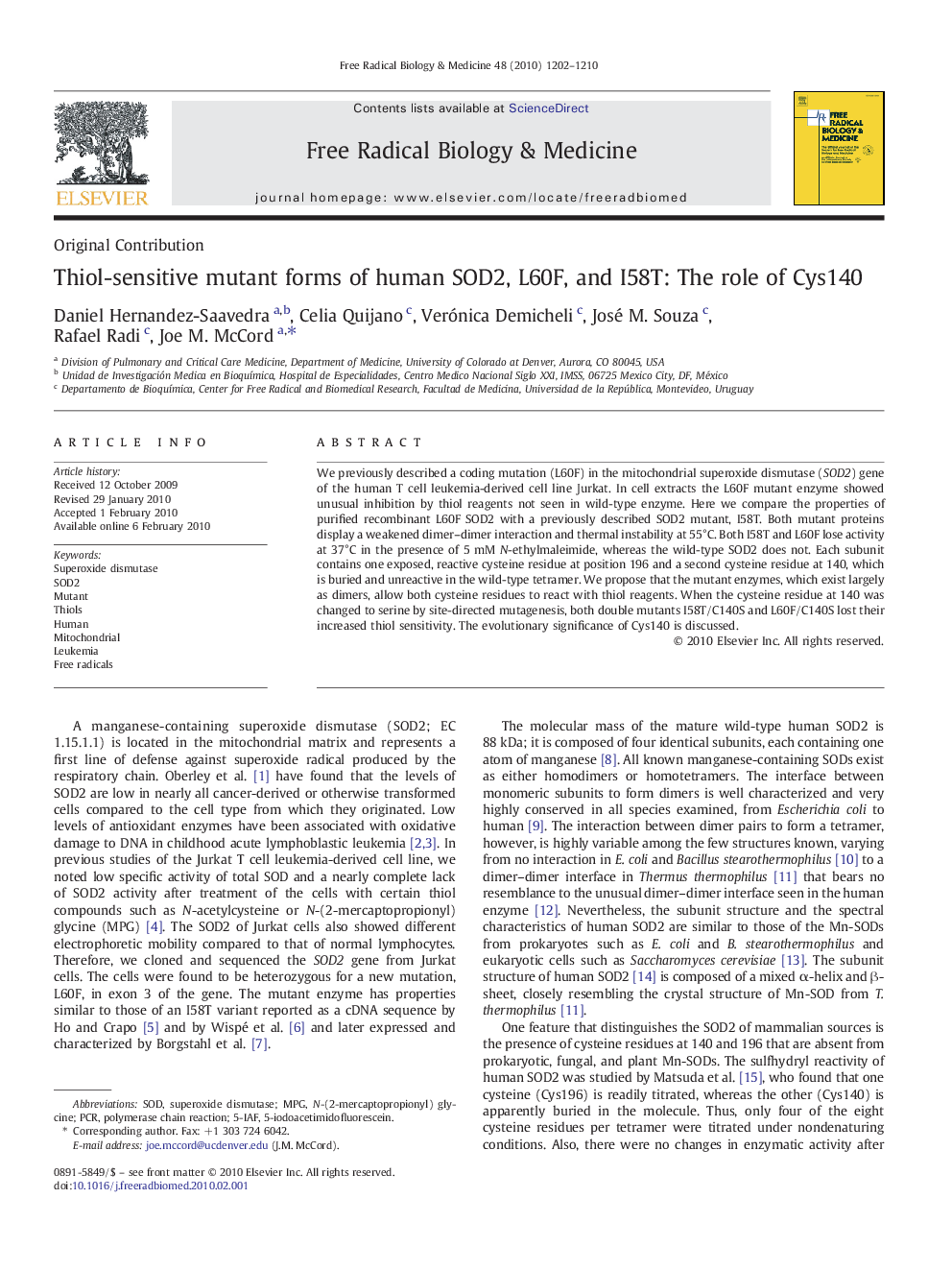| Article ID | Journal | Published Year | Pages | File Type |
|---|---|---|---|---|
| 1909566 | Free Radical Biology and Medicine | 2010 | 9 Pages |
We previously described a coding mutation (L60F) in the mitochondrial superoxide dismutase (SOD2) gene of the human T cell leukemia-derived cell line Jurkat. In cell extracts the L60F mutant enzyme showed unusual inhibition by thiol reagents not seen in wild-type enzyme. Here we compare the properties of purified recombinant L60F SOD2 with a previously described SOD2 mutant, I58T. Both mutant proteins display a weakened dimer–dimer interaction and thermal instability at 55°C. Both I58T and L60F lose activity at 37°C in the presence of 5 mM N-ethylmaleimide, whereas the wild-type SOD2 does not. Each subunit contains one exposed, reactive cysteine residue at position 196 and a second cysteine residue at 140, which is buried and unreactive in the wild-type tetramer. We propose that the mutant enzymes, which exist largely as dimers, allow both cysteine residues to react with thiol reagents. When the cysteine residue at 140 was changed to serine by site-directed mutagenesis, both double mutants I58T/C140S and L60F/C140S lost their increased thiol sensitivity. The evolutionary significance of Cys140 is discussed.
